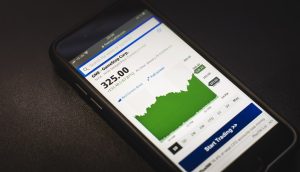The Moving Average Convergence Divergence (MACD) is a popular technical analysis tool used by forex traders to identify potential buy and sell signals. The MACD indicator is a trend-following momentum indicator that is calculated by subtracting the 26-period exponential moving average (EMA) from the 12-period EMA. The resulting value is then plotted on a chart along with a 9-period EMA signal line, which is used to generate trading signals. In this article, we will explain how to use the MACD indicator in forex trading.
MACD Indicator Components
Before diving into how to use the MACD indicator, it’s important to understand its components. The MACD is made up of three components:
1. MACD line: This is the main line that is calculated by subtracting the 26-period EMA from the 12-period EMA.
2. Signal line: This is a 9-period EMA line that is plotted on top of the MACD line. It acts as a trigger for buy and sell signals.
3. Histogram: This is a visual representation of the difference between the MACD line and the signal line. It provides a quick and easy way to see whether the MACD line is above or below the signal line.
How to Use MACD Indicator in Forex Trading
The MACD indicator can be used in a variety of ways to generate buy and sell signals. Here are three popular ways to use the MACD indicator in forex trading:
1. Crossovers: One of the most common ways to use the MACD indicator is to look for crossovers between the MACD line and the signal line. When the MACD line crosses above the signal line, it is considered a bullish signal, indicating that it may be time to buy. Conversely, when the MACD line crosses below the signal line, it is considered a bearish signal, indicating that it may be time to sell.
2. Divergences: Another way to use the MACD indicator is to look for divergences between the MACD line and the price action. If the price is making higher highs, but the MACD line is making lower highs, it is considered a bearish divergence. Conversely, if the price is making lower lows, but the MACD line is making higher lows, it is considered a bullish divergence. These divergences can indicate a potential trend reversal.
3. Overbought/oversold conditions: The MACD indicator can also be used to identify overbought and oversold conditions. When the MACD line is above the signal line and the histogram is above the zero line, it indicates that the market may be overbought. Conversely, when the MACD line is below the signal line and the histogram is below the zero line, it indicates that the market may be oversold.
Tips for Using the MACD Indicator
Here are some tips to keep in mind when using the MACD indicator in forex trading:
1. Use the MACD indicator in conjunction with other indicators and technical analysis tools to confirm signals.
2. Avoid using the MACD indicator in a choppy or sideways market, as it can generate false signals.
3. Adjust the settings of the MACD indicator to suit your trading style and the time frame you are trading in. For example, if you are trading on a longer time frame, you may want to use a longer period EMA for the MACD line.
4. Always use proper risk management techniques, such as setting stop-losses and taking profits, to minimize losses and maximize gains.
Conclusion
The MACD indicator is a powerful tool for forex traders, as it can help identify potential buy and sell signals. By understanding the components of the MACD indicator and how to use it in forex trading, traders can gain an edge in the market and make more informed trading decisions. However, as with any technical analysis tool, it’s important to use the MACD indicator in conjunction with other indicators and technical analysis tools, as well as proper risk management techniques, to minimize losses and maximize gains.






